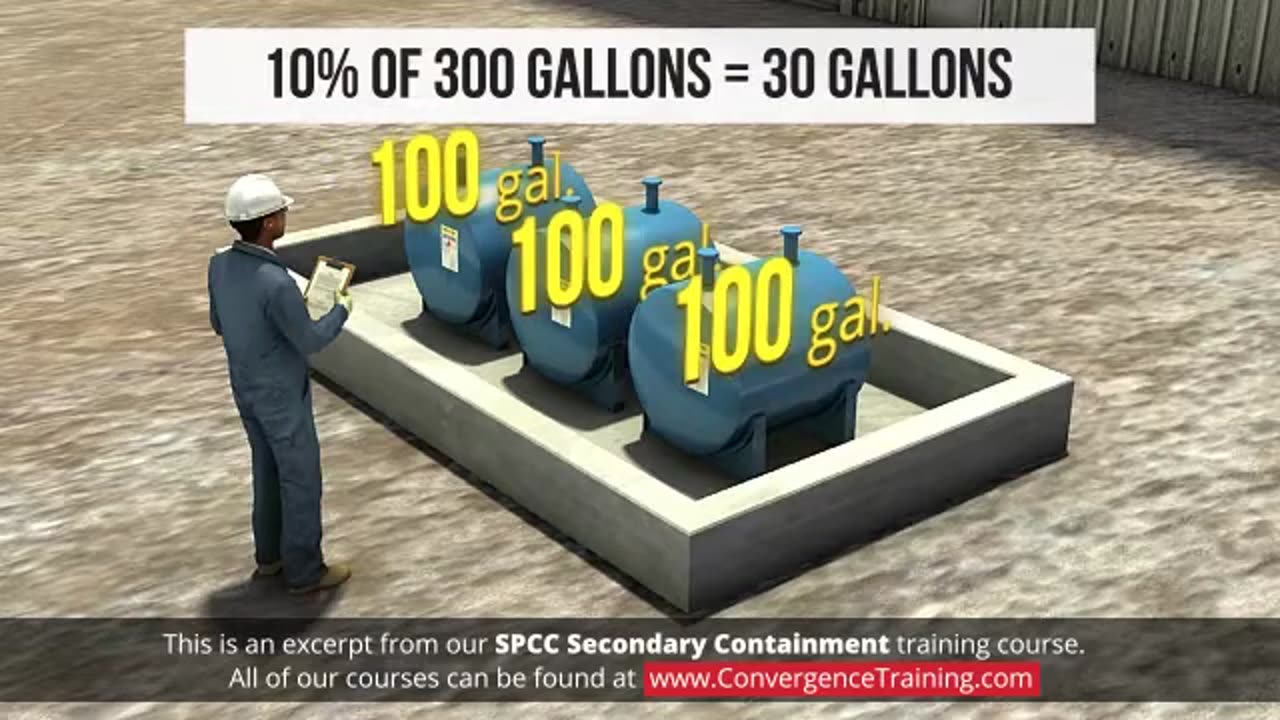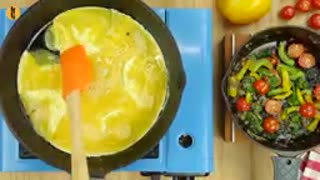Premium Only Content

SPCC Secondary Containment Training
### **SPCC Secondary Containment Training**
This training focuses on compliance with the Spill Prevention, Control, and Countermeasure (SPCC) rule’s requirements for secondary containment. Participants will learn the importance of secondary containment systems, best practices for design and maintenance, and how these systems prevent oil discharges into navigable waters and adjoining shorelines.
---
### **Training Objectives**
1. Understand SPCC rule requirements for secondary containment.
2. Learn how to design and size secondary containment structures.
3. Identify key maintenance and inspection practices.
4. Train staff on emergency response procedures involving secondary containment systems.
---
### **Key Training Modules**
#### **1. Overview of the SPCC Rule**
- **Purpose of the SPCC Rule**
- Preventing oil spills from reaching navigable waters or adjoining shorelines.
- **Applicability**
- Facilities with oil storage exceeding 1,320 gallons aboveground or 42,000 gallons underground.
- **SPCC Secondary Containment Requirements**
- General Secondary Containment: Required for all oil-handling operations, including transfers and storage.
- Specific Secondary Containment: For bulk storage tanks, sized to capture the largest potential spill.
---
#### **2. Design of Secondary Containment Systems**
- **Types of Secondary Containment**
- **Active Systems:** Manual interventions, such as deploying absorbents or shutting valves.
- **Passive Systems:** Built-in structures like berms, dikes, or double-walled tanks.
- **Design Considerations**
- Must contain 110% of the capacity of the largest single tank or sufficient freeboard for precipitation.
- Construct with impervious materials (e.g., concrete, compacted clay liners).
- **Sizing Calculations**
- Understand how to calculate containment volume, including accounting for precipitation in open areas.
- Factor in sloped surfaces and drainage systems.
- **Drainage and Flow Management**
- Design containment to prevent stormwater runoff from carrying oil into waterways.
- Install oil-water separators for draining containment areas.
---
#### **3. Inspection and Maintenance of Secondary Containment**
- **Inspection Frequency**
- Conduct routine inspections (weekly, monthly) as outlined in the SPCC Plan.
- Focus on berms, dikes, floor seals, and drainage systems.
- **Common Issues to Look For**
- Cracks, corrosion, or leaks in containment walls.
- Standing water, debris, or oil residues in containment areas.
- **Maintenance Best Practices**
- Repair damaged containment immediately.
- Regularly remove accumulated rainwater or debris from open containment structures.
---
#### **4. Spill Response Procedures**
- **Deploying Secondary Containment**
- How to activate manual systems during transfers or spills.
- Proper use of absorbents and portable containment barriers.
- **Stormwater Management During a Spill**
- Use drain covers or plugs to prevent contaminated water from leaving containment.
- Monitor runoff during and after containment breaches.
- **Emergency Drills**
- Practice response to hypothetical spill scenarios, including containment overflow.
---
#### **5. Compliance and Recordkeeping**
- **Documentation Requirements**
- Keep inspection records, spill logs, and maintenance reports for a minimum of three years.
- Ensure all secondary containment details are included in the SPCC Plan.
- **SPCC Plan Updates**
- Update SPCC plans after modifications to secondary containment systems or tank capacities.
---
### **Interactive Exercises**
1. **Secondary Containment Design Workshop**
- Calculate secondary containment volume for various storage configurations.
- Design a containment structure for a hypothetical facility using SPCC guidelines.
2. **Inspection Simulation**
- Perform a mock inspection of secondary containment systems, identifying potential deficiencies.
3. **Spill Containment Drill**
- Practice deploying absorbents and active containment measures during a simulated spill scenario.
---
### **Training Deliverables**
- **Workbooks:** Include SPCC requirements, design templates, and sample inspection checklists.
- **Sizing Calculators:** Tools for calculating secondary containment capacity.
- **Inspection Checklists:** For routine and periodic inspections.
- **Certificate of Completion:** Issued to participants upon successful completion.
---
### **Best Practices Covered in Training**
- Use double-walled tanks when possible to minimize the need for external containment.
- Ensure compatibility of containment materials with stored oils.
- Develop a stormwater discharge plan, incorporating oil-water separators and filtration systems.
- Train personnel on both routine and emergency response protocols.
---
Would you like help creating detailed training slides, a checklist, or a site-specific SPCC training plan?
-
 6:54
6:54
HSESafetyInformation
8 months ago6 Must Try Breakfast recipes By Food Fusion
371 -
 15:03
15:03
Demons Row
13 hours ago $13.21 earnedThings Real 1%ers Never Do! 💀🏍️
61.7K22 -
 35:27
35:27
megimu32
16 hours agoMEGI + PEPPY LIVE FROM DREAMHACK!
181K15 -
 1:03:23
1:03:23
Tactical Advisor
19 hours agoNew Gun Unboxing | Vault Room Live Stream 044
266K41 -
 19:12
19:12
Robbi On The Record
21 hours ago $25.16 earnedThe Loneliness Epidemic: AN INVESTIGATION
96.1K118 -
 14:45
14:45
Mrgunsngear
1 day ago $151.02 earnedFletcher Rifle Works Texas Flood 30 Caliber 3D Printed Titanium Suppressor Test & Review
155K35 -
 17:17
17:17
Lady Decade
1 day ago $12.93 earnedMortal Kombat Legacy Kollection is Causing Outrage
101K24 -
 35:51
35:51
Athlete & Artist Show
1 day ago $21.13 earnedIs Ryan Smith The Best Owner In The NHL?
106K17 -
 22:56
22:56
American Thought Leaders
2 days agoCharles Murray: I Thought Religion Was Irrelevant to Me. I Was Wrong.
86.1K65 -
 36:22
36:22
Brad Owen Poker
22 hours agoGIGANTIC $17,000+ Pot In BOBBY’S ROOM! TRAPPING Top Pro w/FULL HOUSE!! Big Win! Poker Vlog Ep 326
87.7K16